I. City Impression: The Millennium Phoenix City Nourished by Fen River
一、城市印象:被汾河滋养的千年凤城
As the high-speed train pulls into Taiyuan South Station, through the train windows one can catch a glimpse of the distant Eastern Hills unfolding like a phoenix spreading its wings, while the Fen River meanders through the city like a jade-like belt. This ancient city known as the “Dragon City” actually resembles more a phoenix reborn from fire. As China’s only provincial capital starting with the character “Tai” (Grand), the character “Yuan” (Plain) in Taiyuan’s name conceals a 3,000-year-old civilization code: from Zhao Jianzi’s founding of the city to Li Yuan’s military uprising, from the rise of Jin merchants to its status as a modern industrial hub, every brick along the Fen River banks etches the marks of civilizational transitions.
当高铁驶入太原南站,透过车窗便能望见远处连绵的东山如凤凰展翅,汾河如玉带穿城而过——这座被称作”龙城”的古城,实则更像一只浴火重生的凤凰。作为中国唯一以”太”字开头的省会,太原的”原”字藏着3000年文明密码:从赵简子筑城到李渊起兵,从晋商崛起至现代工业重镇,汾河岸边的每一块砖石都镌刻着文明更迭的印记。
II. Cultural Landmarks Along the River of History
二、历史长河中的文化坐标
Jinci Temple: A Royal Garden Spanning Millennia
晋祠:穿越千年的皇家园林
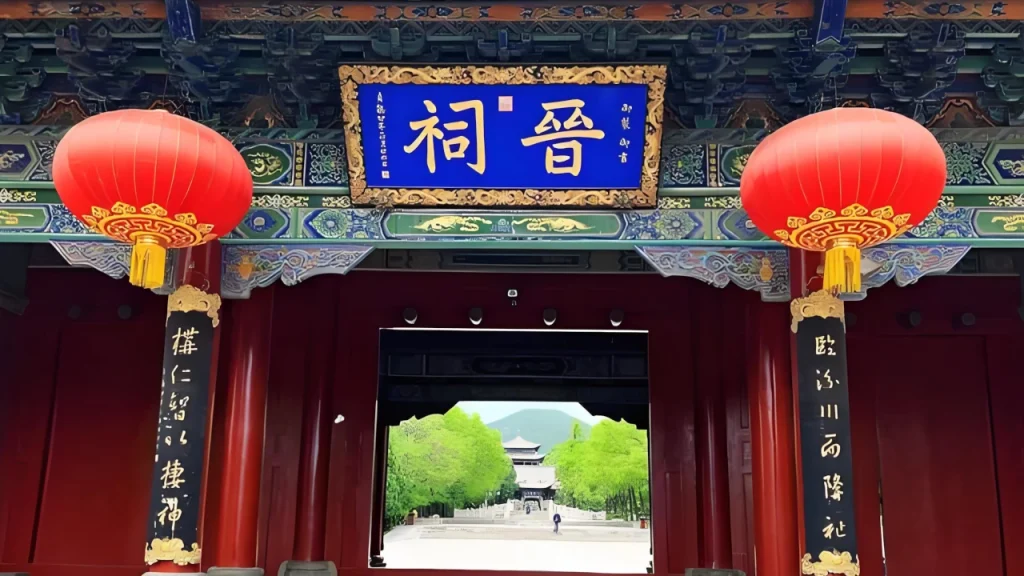
At the foot of Xuanweng Mountain, the Jinci Temple preserves Song Dynasty polychrome statues of maidservants with skirts still bearing thousand-year-old folds. The Fish Pond Flyover Bridge before the Saintly Mother Hall resembles a roc spreading its wings, its 34 octagonal stone columns adorned with faintly visible “Ancient Emperor Temple” inscriptions carved by Jin Dynasty (1161-1189) artisans. By the Never-Aging Spring, the Sheli Regeneration Pagoda built by Ming calligrapher Gao Yingyuan for his mother’s blessing creates the “Pagoda in Sunset Glow” spectacle each dusk. Locals proudly claim that rice cooked with the spring water, once imperial tribute to Emperor Kangxi, still carries that legendary fragrance.
在悬瓮山麓的晋祠,宋代彩塑侍女像的裙裾仍带着千年前的褶皱。圣母殿前的鱼沼飞梁如展翅的鲲鹏,34根小八角形石柱上,隐约可见金大定年间工匠刻下的”古帝庙”字样。难老泉畔,明代书法家高应元为母祈福修建的舍利生生塔,每逢夕阳西下便会出现”宝塔披霞”的奇景。当地老人说,用难老泉水煮的晋祠大米,曾是康熙帝钦点的”贡米”。
Twin Pagoda Temple: Celestial Dialogue Across Time
双塔寺:凌霄双塔的时空对话
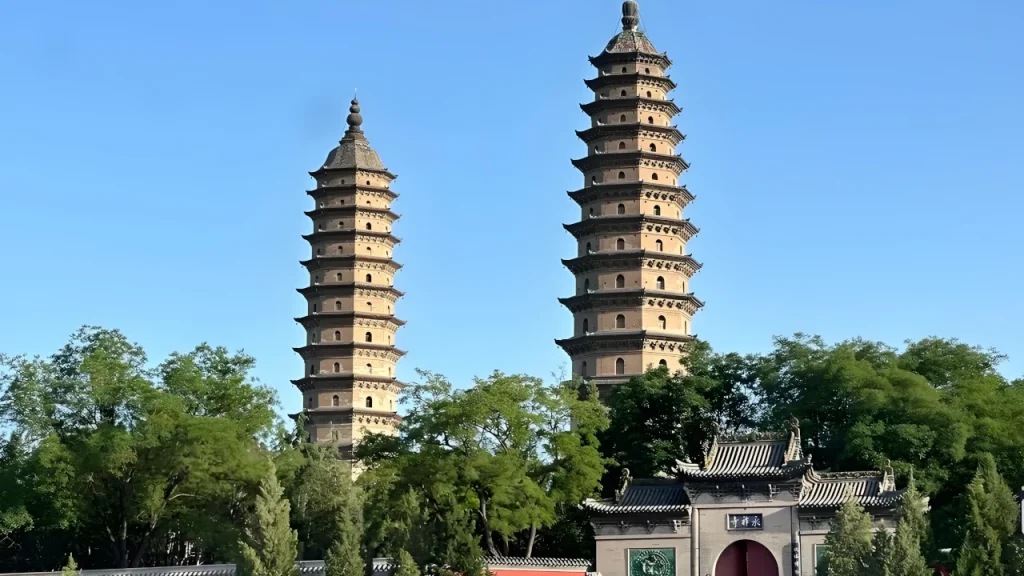
The Yongzuo Temple houses a pair of “twin stars” – the 43.7m Wenfeng Pagoda and 54.86m Sheli Pagoda standing like lover’s gazing across space. Constructed by monk Fudeng in Ming Dynasty to harmonize geomancy, their brick-carved glazed tile ridge beasts shimmer in morning light. The spiral staircases inside frame ever-changing city skylines through arched windows. At spring equinox, their equal shadow lengths become a living textbook of ancient geomancy.
永祚寺内,43.7米高的文峰塔与54.86米的舍利塔如情侣对望。明万历年间,高僧福登为平衡地脉修建这对”双子星”,塔身砖雕的琉璃脊兽在晨光中闪烁,塔内阶梯呈螺旋状上升,每层窗棂都框住不同的城市天际线。每年春分,双塔影长恰好相等,成为古代堪舆学的活教材。
Chunyang Palace: Taoist Mysteries in Nine Palaces Layout
纯阳宫:九宫八卦的玄妙世界
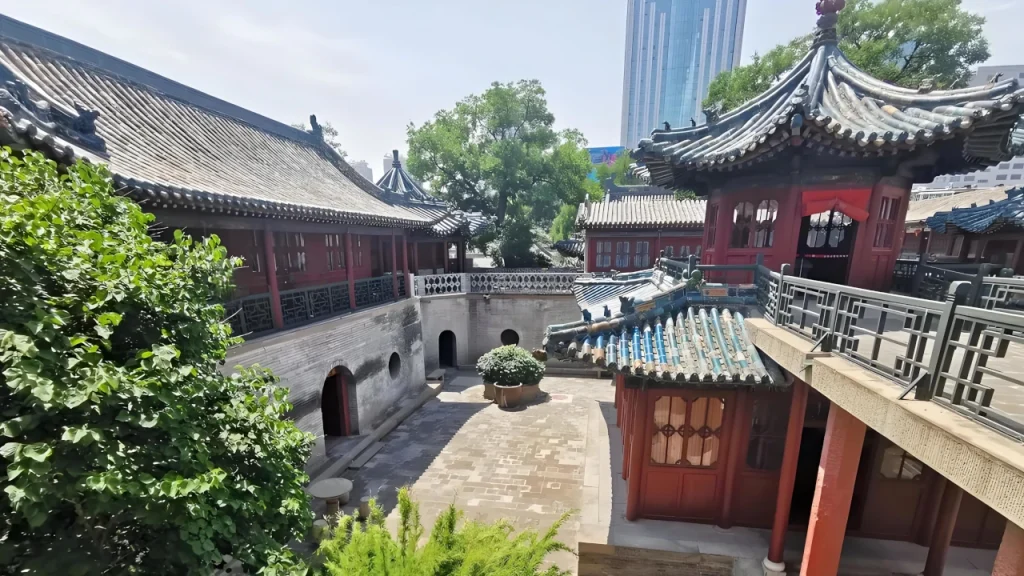
Nestled northwest of May Day Square, the Chunyang Palace honors Taoist patriarch Lu Dongbin. This Yuan Dynasty complex follows the Nine Palaces and Eight Trigrams formation, its eaves adorned with yellow-green glazed tile edges gleaming like Taoist talismans. The Nirvana Transformation Tablet in the rear courtyard features line-engraved Buddha statues with robes flowing like water from Wu Zetian’s era, while the stone relief “Xuanzang’s Pilgrimage” predates Journey to the West by three centuries.
藏在五一广场西北隅的纯阳宫,是道教全真派祖师吕洞宾的供奉地。这座建于元代的宫殿群,按”九宫八卦”布局,殿顶的黄绿琉璃剪边在阳光下宛如道家符箓。后院的涅槃变相碑上,武则天时代的线刻佛陀像衣纹流畅如水,碑侧的”唐僧取经图”比《西游记》早300年。
III. Geographical Code: Survival Wisdom in Mountain-River Matrix
三、地理密码:山河表里的生存智慧
Taiyuan’s geographical configuration forms a natural military fortress: the Taihang Mountain Range extends to the east, the Luliang Mountain Range stands guard to the west, the Xizhou Mountain Range forms a northern barrier like a folding screen, and the Jinzhong Plain stretches southward. The Fen River carves a 30km S-shaped meander through the urban area, precisely echoing the yin-yang fish eyes in the Taiji diagram. This “mountains-and-rivers matrix” made Taiyuan the core of Jin State during the Spring and Autumn Period (770-476 BCE), evolved into the Tang Dynasty’s “Northern Capital” in the 7th century, and enabled Qing Dynasty Jin merchants to transport tea via Fen River’s waterways to Kyakhta in the Sino-Russian border trade.
太原的地理格局堪称天然军事要塞:东有太行余脉天龙山,西依吕梁支脉龙山,北系系舟山如屏风,南接晋中平原。汾河在市区形成30公里的”S”形弯道,恰似太极图中的阴阳鱼眼。这种”山河表里”的地形,让太原在春秋时期成为晋国核心,唐代演变为”北都”,清代晋商则利用汾河漕运将茶叶运往恰克图。
IV. Taiyuan on the Tip of the Tongue: Culinary Legends from Imperial Courts to Street Stalls
四、舌尖上的太原:从宫廷到市井的味觉传奇
Daoxiao Noodles: The Art of Blade-Sliced Dough
刀削面:飞刀削出的面食艺术
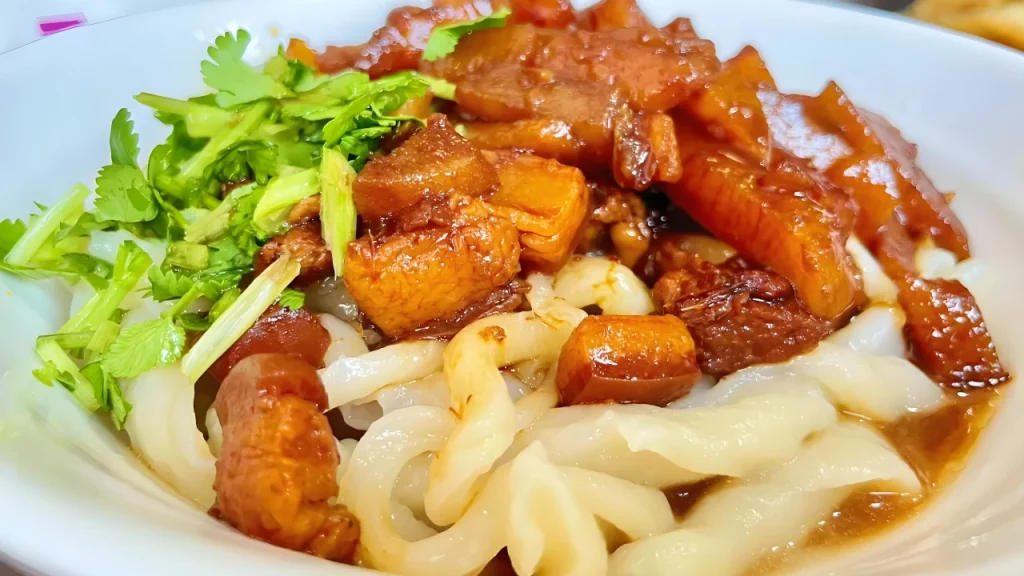
At “Lao Taiyuan Noodle House” on Nanxiaowall Street, chefs wield curved noodle-cutting knives to slice dough into triangular-prism shaped noodles that arc like silver fish diving into boiling broth. Authentic daoxiao noodles follow the rhythm of “one leaf floats as another falls,” with toppings featuring rich broth simmered from northern Shanxi lamb, local honey-marinated chili, and a clove of raw garlic—the ultimate litmus test for noodle authenticity among connoisseurs.
在南肖墙的”老太原面馆”,师傅手持弧形削面刀,将面团削成三棱形面片,如银鱼入水般落入滚汤。正宗的刀削面讲究”一叶落锅一叶飘”,浇头必用晋北羊肉熬制的浓汤,撒上本地荆条蜜腌制的辣子,再配一瓣生蒜,是老饕们验证面馆正宗与否的”试金石”。
Tounao: Ming-Qing Dynasty Wellness Elixir
头脑:明末清初的养生秘方
Before dawn, Qingheyuan Restaurant starts brewing this “Eight-Treasure Soup”: astragalus, simmered wheat flour, lotus root, and lamb stewed for 8 hours in clay pots. Created by scholar Fu Shan as a herbal medicinal cuisine, the gray-brown porridge-like dish surprises with lamb’s umami and herbal sweetness. Locals pair it with pickled chives and steamed dumplings, creating a ritualistic winter morning experience.
天还没亮,清和园的伙计就开始熬制这道”八珍汤”:黄芪、煨面、莲菜、羊肉等食材在砂锅中慢炖8小时。傅山先生创制的这道药膳,看似像一碗灰褐色的糊糊,喝起来却有羊肉的鲜香与药材的回甘。老太原人讲究”头脑配腌韭菜”,再就着烧麦,成为冬日清晨的仪式感。
Yangzage: Nomadic-Agricultural Culinary Fusion
羊杂割:游牧与农耕的味觉融合
“Hao Ganggang Yangzage” on Gulou Street sells 3,000 bowls daily of this sheep offal stew. Using free-range goats from central Shanxi, the meticulously cleaned heart, lungs, liver, and intestines simmer in broth made from lamb bones and over 20 medicinal herbs. The signature “mutton fat chili oil”—rendered from local red peppers and lamb tail fat—sizzles when splashed on the surface, releasing aromas that permeate half the street.
鼓楼街的”郝刚刚羊杂割”每天卖出3000碗,选用晋中放养的山羊,心肺肝肠处理得极干净,汤头用羊骨与20余味中药熬制。最特别的是那抹”羊油辣子”,用本地红辣椒与羊尾油炼制,泼在汤面上发出”滋啦”声,香气能飘出半条街。
Laoshuku Glutinous Rice Balls: Century-Old Sweet Alchemy
老鼠窟元宵:百年非遗的甜蜜密码
The queue never ends at “Laoshuku” shop on Zhonglou Street, founded in 1928. Using Jinci glutinous rice ground into flour and filling made from Xinzhou walnuts mixed with Taigu aged vinegar sugar, these translucent balls cook to a cicada-wing thinness. When bitten, amber-colored syrup gently flows out—a phenomenon locals fondly call “breathing glutinous rice balls,” now a protected intangible cultural heritage.
钟楼街的”老鼠窟”店铺前,永远排着长队。这家1928年创立的老字号,坚持用晋祠糯米磨粉,馅料必选忻州核桃与太谷老陈醋调制的糖馅。煮好的元宵皮薄如蝉翼,咬开时会有褐色糖汁缓缓流出,老太原人戏称这是”会呼吸的元宵”。
V. Themed Travel Routes: Five Immersive Journeys
五、深度游推荐:五条主题路线
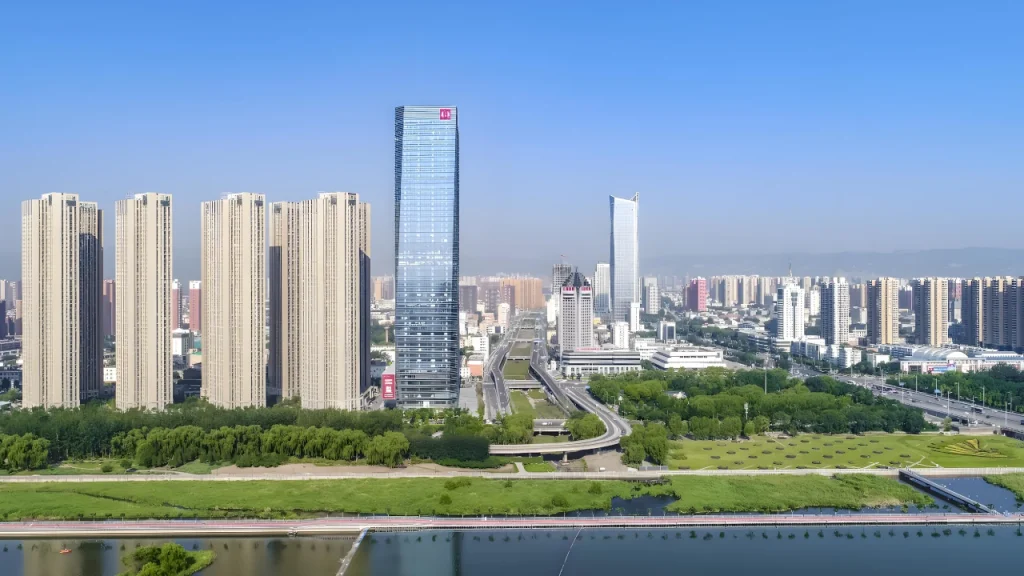
- Jin-style Antiquity Tour
晋韵古风之旅:
Jinci Temple → Tianlong Mountain Grottoes → Twin Pagoda Temple → Chunyang Palace
晋祠→天龙山石窟→双塔寺→纯阳宫 - Fen River Eco-Adventure
汾河生态之旅:
Fen River Park → Jinyang Lake → Mengshan Giant Buddha → Taishan Dragon Spring Temple
汾河公园→晋阳湖→蒙山大佛→太山龙泉寺 - Intangible Heritage Discovery
非遗体验之旅:
Shanxi Aged Vinegar Museum → Paper-cutting Studio → Glazed Tile Kiln → Jin Opera Teahouse
老陈醋博物馆→剪纸工坊→琉璃烧制基地→晋剧茶馆 - Revolutionary Memory Trail
红色记忆之旅:
Marshal Peng Dehuai’s Former Residence → Gao Junyu’s Birthplace → Taiyuan Liberation Memorial Hall
彭德怀元帅故居→高君宇故居→解放太原纪念馆 - Gourmet Quest Expedition
美食寻味之旅:
Food Street Night Market → Bridgehead Street Hotpot → South Inner Ring Street Noodle with Gravy → Yijing Snack Alley
食品街夜市→桥头街铜锅涮肉→南内环街打卤面→义井小吃街
VI. Travel Tips
六、旅行贴士
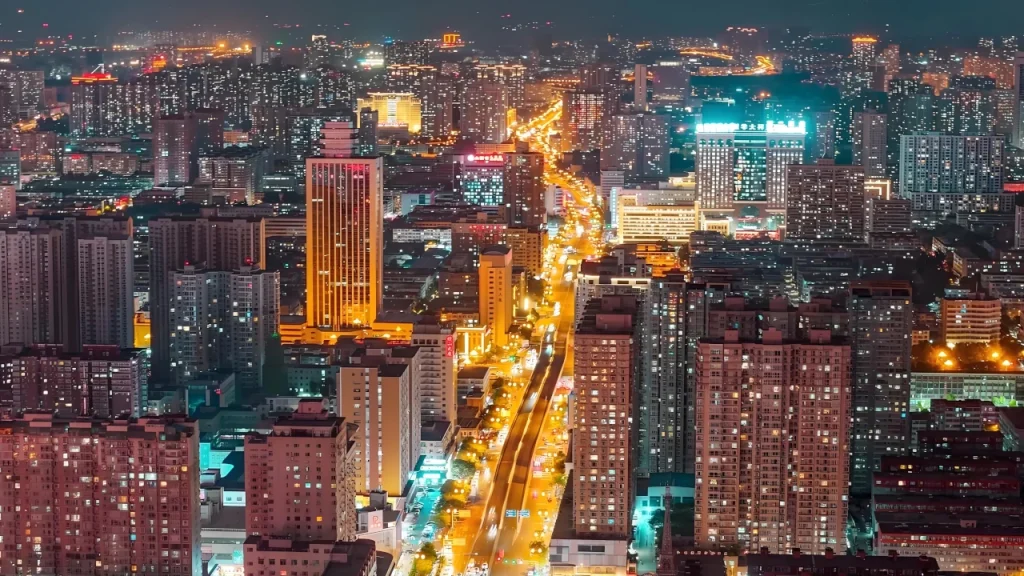
Best Time to Visit:
最佳季节:
- April-May: Tianlong Mountain ablaze with peach blossoms
- 4-5月天龙山桃花盛开
- September-October: Mengshan Mountains painted in autumn hues
- 9-10月蒙山层林尽染
- December-February: Jinci Temple transformed into ink-wash snowscapes
- 12-2月晋祠雪景如水墨画
Transportation Guide:
交通建议:
- Urban attractions accessible via Metro Line 2
- 市区景点可乘地铁2号线
- Jinci Temple reachable by Y1 Tourist Bus
- 晋祠建议乘Y1路旅游专线
- Taishan Mountain a 20-minute taxi ride from downtown
- 太山可打车(约20分钟车程)
Unique Experiences:
特色体验:
- Join the “Night Tour of Dragon City” light show at Fen River Park
- 在汾河公园参加”夜游龙城”灯光秀
- Watch the “Dreamlike Jinyang” live performance at Jinyang Lake
- 到晋阳湖观看《如梦晋阳》实景演出
As the dawn bells of the Twin Pagoda Temple shatter the last wisps of mist, as the aroma of skewered lamb wafts through the twilight of Food Street, and as the glazed tiles in the hands of intangible cultural heritage artisans bloom like rosy clouds in the kiln fire, this phoenix city nourished by the Fen River serves up a time-traveling epicurean feast with its 2,500-year civilization. Here, every brick whispers stories, every bite of local cuisine carries the weight of history, awaiting you to touch, to savor, and to write new chapters in this living chronicle.
当双塔寺的晨钟撞碎最后一缕薄雾,当食品街的羊肉串香在暮色中弥漫,当非遗匠人手中的琉璃在窑火中绽放流霞,这座被汾河滋养的凤凰城,正用它2500年的文明积淀,为每一位旅人烹制着一场穿越时空的饕餮盛宴。在这里,每一块砖石都藏着故事,每一口美食都浸着历史,等待着您来触摸、来品味、来续写新的篇章。

Leave a Reply